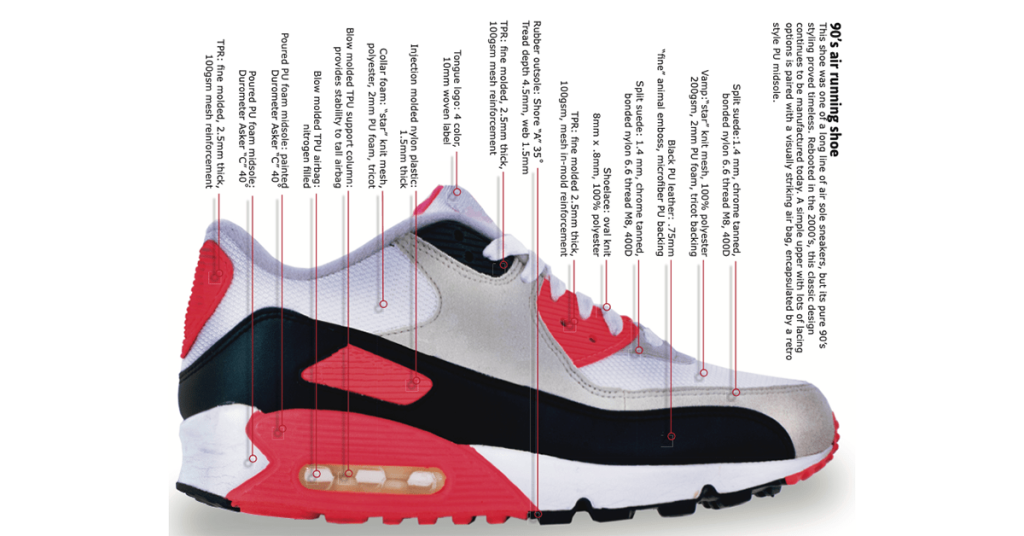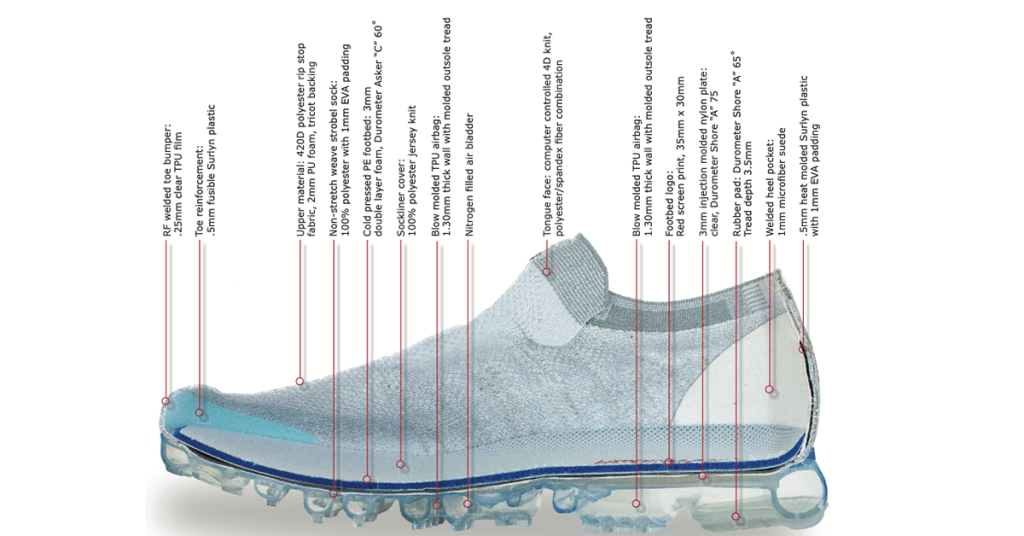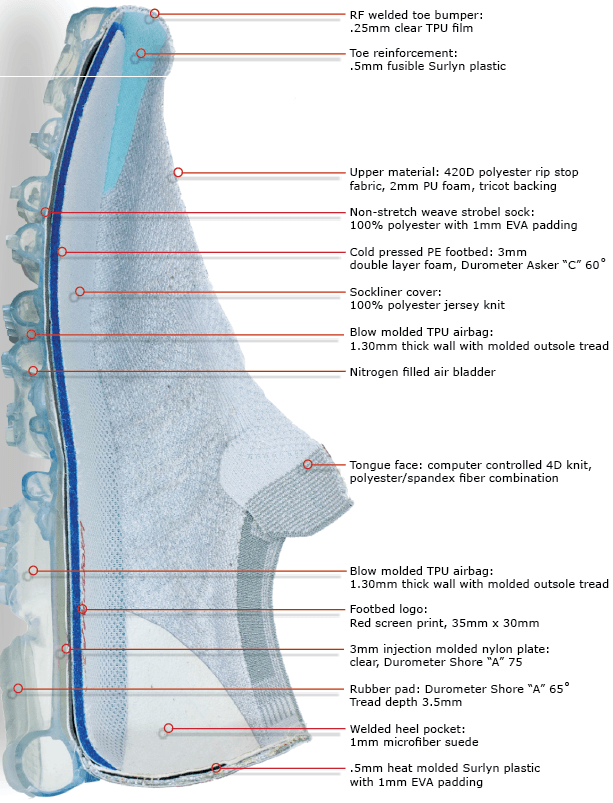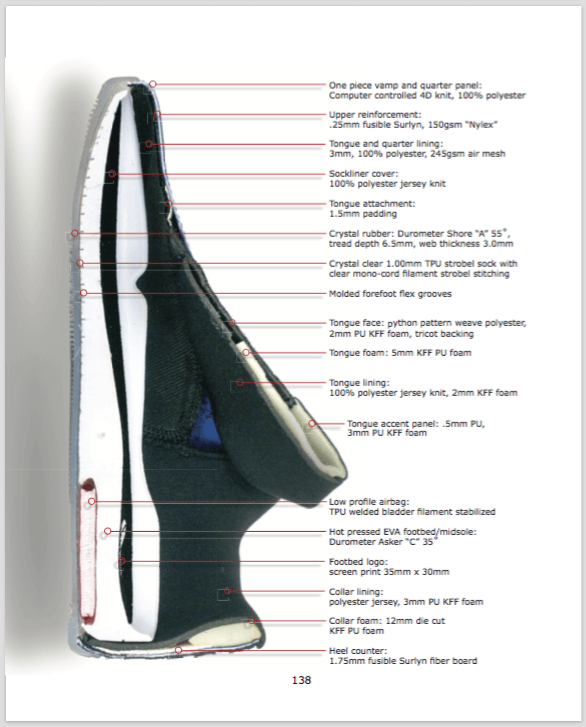When it comes to shoes, the materials used can greatly affect comfort, durability, and style. Understanding what most shoes are made of can not only help you make better purchasing decisions but also enhance your appreciation for the craftsmanship involved. From high-fashion sneakers to rugged hiking boots, different materials have specific benefits and drawbacks.
Understanding Footwear Materials
In the U.S. footwear market, various materials are employed to create shoes. This diversity caters to different consumer preferences, performance needs, and trends. Below, we break down the most common materials used in shoe manufacturing.
1. Leather
Leather is a timeless classic in footwear. Known for its durability and comfort, leather is often used in formal shoes, boots, and some casual footwear. It’s made from animal hides, typically cowhide, and can be categorized into several types:

- Full-grain leather: Retains the natural grain and is the most durable.
- Top-grain leather: Sanded and refinished, offering a more uniform appearance.
- Genuine leather: A catch-all term for lesser grades of leather.
Pros and Cons of Leather Shoes
| Pros | Cons |
|---|---|
| Durable and long-lasting | Expensive compared to synthetic options |
| Classic appearance | Requires regular maintenance |
| Breathable and molds to feet | Can be heavy |

2. Synthetic Materials
Synthetic materials have revolutionized footwear manufacturing. Made from petroleum-based compounds, synthetics can mimic natural materials but often at a lower price and weight. Some common synthetic materials include:

- Mesh: Used for breathability, commonly found in athletic shoes.
- Microfiber: A lightweight, soft, and water-resistant fabric.
- Polyurethane: Often used for soles and cushioning.
Pros and Cons of Synthetic Shoes
| Pros | Cons |
|---|---|
| Lightweight and flexible | Less breathable than leather |
| Water-resistant options available | May not be as durable as leather |
| Generally more affordable | Environmental concerns related to production |

3. Rubber
Rubber is the go-to material for shoe soles, providing necessary grip and flexibility. It’s often used in conjunction with other materials to enhance performance. There are two main types of rubber:

- Natural rubber: Harvested from rubber trees, providing excellent elasticity.
- Synthetic rubber: Created through chemical processes, often used for specific performance qualities.
Rubber in Action: Case Study
Consider the popular brand Nike, known for its high-performance athletic shoes. The company often utilizes a specialized rubber compound in its sole design, which enhances traction and durability. This innovation has contributed to its status as a leader in sports footwear.

4. EVA (Ethylene Vinyl Acetate)
EVA is a favorite material among shoe manufacturers for padding and midsoles. Its lightweight and cushioning properties make it extremely popular in running and casual shoes. Not only is it flexible, but it also provides good shock absorption.

Real-World Footwear Experience
A common experience among runners is the comfort derived from shoes with EVA midsoles. For instance, the popular Adidas Ultraboost utilizes a sophisticated form of EVA to provide exceptional energy return during runs. Runners rave about the responsive feeling, contributing to their overall performance.
Choosing the Right Material for Your Needs
When selecting the best footwear for your lifestyle, consider the following tips:
- Assess Your Lifestyle: Are you looking for daily wear, athletic performance, or special occasions?
- Understand the Environment: Consider the weather and terrain where you’ll be wearing your shoes.
- Check the Fit: Ensure shoes are appropriately sized, regardless of the materials.
FAQs About Shoe Materials
1. What are the most common materials used in shoes?
The most common materials include leather, synthetic fabrics, rubber, and EVA. Each offers unique benefits based on functionality and style.
2. Is leather better than synthetic materials for shoes?
It depends on your needs. Leather typically offers more durability and breathability, while synthetics can be lighter and more affordable.
3. Are there eco-friendly shoe materials available?
Yes, many brands are exploring eco-friendly materials such as recycled plastics, organic cotton, and sustainable rubber options to reduce their environmental impact.
4. How can I maintain my leather shoes?
Regular cleaning, conditioning, and protecting with waterproof sprays can help maintain the quality of leather shoes.
5. Do running shoes need to be made of specific materials?
Yes, running shoes often require specialized materials such as lightweight mesh for breathability and EVA for cushioning.
6. What is the lifespan of synthetic shoes compared to leather?
Synthetic shoes typically last 1-2 years, while high-quality leather shoes can last several years with proper care.
7. Are rubber soles better for traction?
Yes, rubber soles generally provide better traction on various surfaces, making them suitable for athletic and outdoor footwear.
8. Can I wear leather shoes in the rain?
While some leather shoes are treated for water resistance, it’s best to avoid excessive exposure to rain to prevent damage.
9. How do I choose shoes for hiking?
Look for shoes with durable materials, waterproofing, and good traction. Features like ankle support can also be crucial.
10. What should I consider when buying kids’ shoes?
For children, consider the flexibility, breathability, and ease of putting on and taking off. Durable materials that can withstand wear are also essential.
11. Are designer shoes made from better materials?
Designer shoes often use high-quality materials and undergo rigorous production standards, but it’s essential to research each brand individually.
Conclusion: The Importance of Material in Footwear
The materials that shoes are made from significantly impact their performance, comfort, and style. Whether you’re a shoe enthusiast, a fashion lover, or someone in search of the perfect pair for your lifestyle, understanding these materials will lead to better choices and satisfaction with your footwear. With various options available, from luxurious leather to innovative synthetics, there is a shoe for every purpose and preference.
Happy shoe hunting!